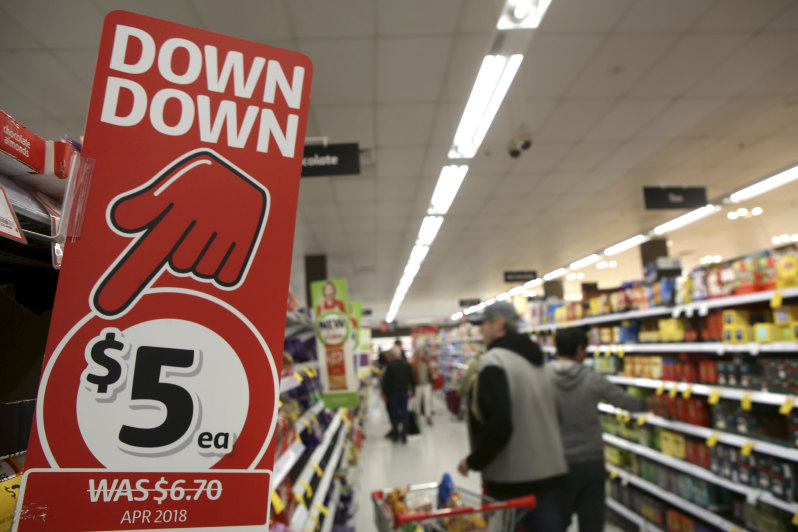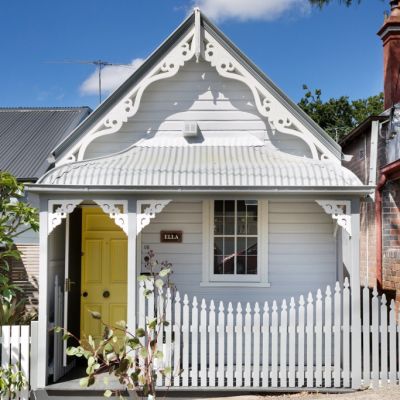Sydney house prices drop for first time in almost two years
Sydney houses have joined those in Melbourne in losing value as a slowdown in population growth and a jump in properties on the market finally put the brakes on ever-increasing prices.
As new retail trade figures showed consumers did not use the stage 3 tax cuts to go on a spending spree that might have added to inflation pressures, data from CoreLogic found Sydney house values dropped by 0.1 per cent in October.

It was the first monthly fall in Sydney house values since the start of 2023. Despite the drop, the median value of a Sydney home remains out of the reach of most at $1.48 million, up 3.9 per cent over the past year.
Melbourne house values eased another 0.2 per cent last month to be down 1 per cent over the past three months and 1.8 per cent lower since October 2023. Its median value edged down to $928,808.
Values also edged down in Darwin (by 1.1 per cent) and Canberra (by 0.7 per cent). But they continued to surge in Perth, lifting 4 per cent in the month to be up 22.4 per cent over the past 12 months. Adelaide house values rose 3.6 per cent to be 14.5 per cent higher since October last year while Brisbane values improved by 0.7 per cent for an annual increase of 11.9 per cent.
CoreLogic’s research director, Tim Lawless, said prices were holding up for the first home buyer and investor part of the market, with the drop-off being led by more expensive properties.
He said the slowdown in values had been accompanied by an increase in the number of homes on the market. In Sydney and Melbourne, advertised stock is 13 per cent above long-term averages while in Perth it has jumped by 20.6 per cent, albeit from a low level.
“Despite the rise in listings across the mid-sized capitals, Perth, Adelaide and Brisbane are still seeing advertised stock levels more than 20 per cent below the five-year average for this time of the year,” he said.
“These markets remain well and truly in favour of sellers, although the balance is starting to gradually improve.”
The rental market is also showing signs of easing. Rents in Sydney (down 0.6 per cent), Melbourne (down 0.4 per cent), Brisbane (down 0.3 per cent), Hobart (down 0.6 per cent) and Canberra (down 1.5 per cent) have all fallen over the past three months.
This week’s monthly inflation figures showed rent inflation slowing to 6.6 per cent in September, down from 7.1 per cent in June.
Lawless said the softer rental market was probably due to a slowdown in net overseas migration and an increase in the average size of households, which shrank sharply during the Covid pandemic.
Figures from the Australian Bureau of Statistics on Thursday suggest a lift in new housing supply is on its way. Approvals for private homes rose by 4.4 per cent in September to their highest level since August 2022.
Over the past year, approvals for houses have grown by 16.7 per cent. Approvals for units increased by 4.7 per cent during the month but are down 12.2 per cent over the past 12 months.

Relatively high interest rates, and ongoing cost pressures, continue to plague the property market.
The start of the stage 3 tax cuts on July 1 prompted fears consumers would use their share of the $24 billion in tax relief to go on a spending spree that would amplify inflation pressures and delay possible interest rate relief.
But the value of retail sales in September lifted by just 0.1 per cent to be up by just 0.8 per cent since the tax cuts hit consumers’ bank accounts.
Spending per person has now fallen for nine consecutive quarters and is at its lowest level since September 2021.
While the value of household good sales lifted by 0.5 per cent in the month, this followed a 0.4 per cent drop in August. Sales through department stores (0.5 per cent), clothing and footwear (0.1 per cent) and food (0.1 per cent) all dropped.
KPMG chief economist Brendan Rynne said the retail sector remained in a deep per-capita recession, with the figures confirming consumers were watching every cent they spent.
“This result also raises the prospect of a negative economic outlook for the September quarter,” he said.
We recommend
We thought you might like
States
Capital Cities
Capital Cities - Rentals
Popular Areas
Allhomes
More










